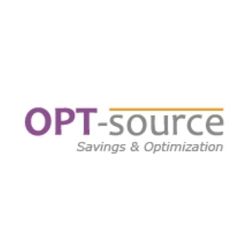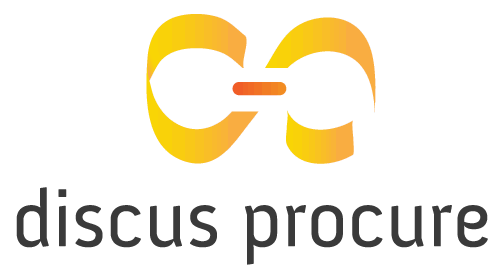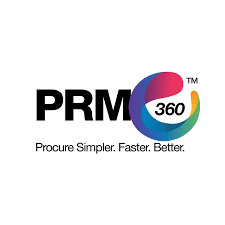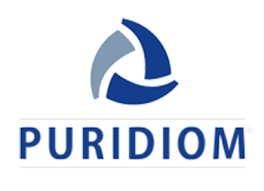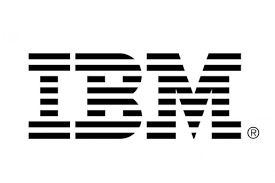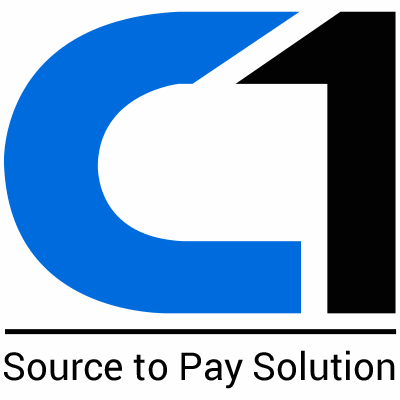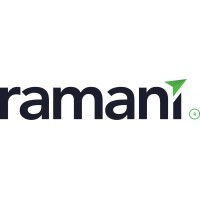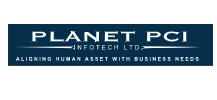What is E-Procurement Software?
A digital tool called E-Procurement software was created to help firms automate and simplify their purchasing procedures. From sourcing and ordering to invoicing and payments, it enables businesses to oversee and monitor every facet of their procurement process on a single, online platform. With the help of this software's many features and functions, buyers may make better informed and calculated purchasing decisions.
Businesses can benefit from time savings, cost savings, increased transparency, and improved supplier collaboration. The capacity of E-Procurement software to interact with suppliers' systems, allowing for real-time communication and data exchange, is one of its primary characteristics. By doing this, you may prevent the delays and mistakes that come with manual purchasing procedures and guarantee correct and timely orders and invoicing.
The capacity of E-Procurement software to collect and evaluate data pertaining to procurement operations is another important advantage. Cost-saving opportunities, supplier performance, and spending trends are just a few of the insightful information that can be obtained from this data. Purchase decisions can be influenced by these insights, which will ultimately result in reduced expenses and increased productivity.
To further expedite the procurement process, E-Procurement software frequently incorporates functions like contract administration, vendor management, and electronic sourcing. Additionally, it can offer an easy-to-use interface for staff members to place orders and monitor their progress, relieving the purchasing team of some of the administrative strain.
What Are The Recent Trends In E-procurement Software?
E-Procurement software has emerged as a crucial instrument for controlling and expediting the purchase process in businesses of all kinds in recent years. The E-Procurement landscape is always changing due to technological improvements and the growth of e-commerce. To make the greatest choice for your company, it's critical for buyers to keep up with the most recent developments in E-Procurement software. Some recent trends to be aware of are as follows:
1. Solutions Based On The Cloud: The move to cloud-based solutions is one of the biggest developments in E-Procurement software. This indicates that rather than being installed on personal computers, the program is hosted on distant servers and accessible online. Scalability, affordability, and accessibility from any place are just a few advantages of cloud-based systems.
2. Optimization For Mobile: Providers of E-Procurement software are now concentrating on mobile optimization due to the growing popularity of smartphones and tablets. This makes it simpler to manage procurement procedures while on the go by enabling users to use the software on their mobile devices. Additionally, real-time data and notifications from mobile optimization facilitate quicker decision-making and greater productivity.
3. Artificial Intelligence (AI) And Automation: By automating repetitive activities, decreasing human error, and boosting process efficiency, automation and artificial intelligence are revolutionizing the E-Procurement scene. Procurement specialists may examine expenditure trends, spot areas for cost reduction, and strengthen supplier relationships with AI-powered solutions. Additionally, automation frees up time for more strategic duties by doing away with the necessity for manual data entry.
4. System Integration: ERP and accounting software, among other systems, must be coupled with E-Procurement software in today's networked company environment. This simplifies the entire purchasing process and permits smooth data interchange. Additionally, integration decreases the need for manual data entry and increases data accuracy.
5. Prioritizing Data Security: Data security is becoming more and more important as E-Procurement software handles more sensitive data. Software vendors that offer cutting-edge security features like data encryption, access controls, and frequent security upgrades should be sought after by buyers.
6. Easy-To-Use Interface: As more businesses use E-Procurement software, an intuitive user interface is becoming more and more important. Customers should seek out software with a clear, simple design that is easy to use and intuitive. This saves time and money on staff training while also increasing user happiness.
Benefits Of Using eProcurement Software
Businesses of all sizes are quickly realizing how effective E-Procurement software is at expediting the procurement process. This creative solution offers many advantages to businesses by centralizing and automating the entire procurement process, from demand to purchase order to payment.
1. Cost Savings: E-Procurement software drastically lowers administrative expenses by doing away with manual data entry and paper-based procedures. Additionally, it increases accuracy and efficiency while lowering the possibility of costly errors.
2. Effective Supplier Management: E-Procurement software offers a consolidated platform for supplier management, making it simple for companies to track supplier performance, compare prices, and negotiate contracts. Better supplier management is made possible by this, which lowers costs and strengthens bonds with suppliers.
3. More Control And Visibility: E-Procurement software gives companies useful insights into their spending patterns, supplier performance, and procurement process as a whole through real-time analytics and reporting features. Better cost control and decision-making are made possible by this enhanced visibility.
4. Compliance And Regulatory Adherence: E-Procurement software guarantees adherence to policies and laws while streamlining the procurement process, lowering the risk of non-compliance and the fines that come with it.
5. Time Savings: E-Procurement software allows staff to focus on more strategic and valuable activities by automating manual and time-consuming tasks. Faster turnaround times and more production result from this.
6. Better Budget Management: By offering a centralized platform for monitoring and regulating expenditures, E-Procurement software facilitates better budget management. This aids companies in avoiding overspending and staying within their budget.
7. Improved Cooperation: E-Procurement software encourages cooperation between various departments and procurement process stakeholders, which improves communication, alignment, and, eventually, procurement results.
8. Scalability: A company's purchase requirements expand along with it. Because E-Procurement software is scalable, it can adapt to the evolving needs of a developing company without necessitating major system modifications.
Important Factors To Consider While Purchasing E-Procurement Software?
Buyers of E-Procurement software should take into account a number of crucial elements to make sure they are choosing the best option for their company. These elements can assist customers in selecting a dependable and cost-effective solution that fits their unique requirements.
When investing in E-Procurement software, bear the following points in mind:
1. Features And Functionality: The E-Procurement software's features and functionality should be the first and most crucial consideration. Features that complement the organization's procurement procedures and objectives should be included, such as spend analysis, vendor management, purchase order preparation and approval, contract administration, and integration capabilities.
2. Scalability And Customization: As businesses expand, so do their buying requirements. Consequently, selecting E-Procurement software that is adaptable and scalable to changing business needs is essential. This guarantees that the software will eventually continue to satisfy the needs of the company.
3. User-Friendly Interface: It should be simple to navigate and comprehend the software's user interface. This will facilitate a seamless adoption process by saving time and effort when training staff to utilize the program.
4. Integration Capability: The procurement process can be made much more efficient and streamlined by an E-Procurement system that can easily link with other software and systems that are already in place, such as accounting or ERP systems.
5. Pricing And Cost-Effectiveness: When making any kind of purchase, including E-Procurement software, cost is an important factor. To determine which software solution provides the best value for their money, buyers should examine the pricing structures of several options.
6. Vendor Support And Training: For the E-Procurement software to be implemented and used successfully, the software vendor must provide sufficient support and training. Customers should make sure the vendor provides thorough training and support services, such as online resources, user manuals, and a help desk for technical support.
7. Security And Compliance: Sensitive data, including supplier and financial information, is handled by E-Procurement software. To safeguard this data, strict security procedures should be in place. The program should also abide by all applicable laws and industry standards.
8. Reviews And Reputation: Examining the E-Procurement software's ratings and reviews from other users in the same industry is always helpful. Customers may be better able to weigh the software's advantages and disadvantages as a result, enabling them to make an informed choice.
What Are The Key Features To Look For In E-Procurement Software?
Look for essential characteristics that will increase overall efficiency and optimize your procurement procedures while evaluating E-Procurement software. When making a purchase, keep the following features in mind:
1. Procurement Automation: To cut down on human labor and save time, look for software that automates the entire procurement process, from requisition to invoice payment.
2. Supplier Management: A robust supplier management system that enables you to keep an inventory of suppliers, monitor their performance, and negotiate contracts should be included in any excellent E-Procurement software.
3. Purchase Order Management: Purchase orders, including their tracking and approval, should be able to be generated and managed by the software.
4. Budgeting And Spend Management: To assist you keep tabs on your expenses, the program should offer capabilities for tracking and creating a budget.
5. Inventory Management: Seek out a system that lets you monitor stock levels and create buy orders automatically when stock drops below a predetermined level.
6. Purchase Requisition: The software should provide a user-friendly purchase requisition procedure that enables staff members to track the progress of their requests and make requests for goods or services within the authorized budget.
7. Reporting And Analytics: Having access to extensive reporting and analytics tools will assist you make data-driven decisions and obtain insightful knowledge about your procurement procedures.
8. Integration With Other Systems: To increase overall efficiency and speed data transfer, take into account software that interacts with your current systems, such as accounting or enterprise resource planning (ERP) software.
9. Mobile Compatibility: Having E-Procurement software that is mobile-friendly can be quite helpful in terms of accessibility and convenience in today's world, where employees are constantly on the go.
10. User-Friendly Design: Lastly, but just as importantly, the software should have an intuitive, user-friendly design that makes it simpler for staff members to adopt and utilize the system. In conclusion, take into account these crucial characteristics while searching for E-Procurement software to make sure you are spending money on a program that will streamline your procurement procedures, cut expenses, and promote general company expansion.
Why Do Businesses Need eProcurement Software?
Electronic procurement software, or eProcurement software, is a digital technology that helps firms make purchases more efficient. By replacing manual and paper-based techniques with a centralized platform, it enables businesses to automate and manage their procurement processes. So why is eProcurement software necessary for businesses? These are the main explanations:
1. Enhanced Efficiency: Companies may automate and digitize their procurement procedures with eProcurement software, doing away with manual labor including data entry, paperwork, and approvals. This increases the purchasing process's overall efficiency and saves time.
2. Cost Savings: Businesses can reduce expenses like printing and storage that come with paper-based approaches by automating procurement operations. Additionally, E-Procurement software helps businesses to watch pricing trends, negotiate better prices, and find cost-saving possibilities, all of which contribute to overall cost savings.
3. Improved Compliance: Businesses may find it difficult to manually stay on top of compliance and regulatory obligations. By automating the process and offering real-time visibility into spend and vendor performance, eProcurement software assists firms in ensuring compliance.
4. Increased Transparency: Companies may see their whole procurement process in real time with eProcurement software. This enables them to monitor expenditures, spot instances of over spending, and guarantee accountability and openness in the procurement procedure.
5. Accurate Data And Reporting: Businesses may use the accurate, real-time data that eProcurement software offers to find cost-saving opportunities and make well-informed decisions. Additionally, it gives companies the ability to create personalized reports and analytics on their procurement procedures, offering useful information for future expenditures.
6. Simplified Vendor Management: Companies can have a consolidated database of vendors, their credentials, and their performance history thanks to eProcurement software. This facilitates vendor management and evaluation, guaranteeing the choice of trustworthy and reasonably priced suppliers.
How Much Time Is Required To Implement E-procurement Software?
A number of variables, including the software's complexity, the organization's size, and the degree of customisation needed, might affect how long it takes to adopt E-Procurement software. The implementation procedure often takes a few weeks to many months to complete. Setting up the system is the first stage in putting E-Procurement software into practice, and it usually takes a few days.
This include establishing workflows for approval, configuring user accounts, and adapting the system to the company's procurement procedure. Depending on the volume and complexity of the data, data transfer from legacy applications or spreadsheets may take several weeks or even months. Implementation time may also be increased by customization and interaction with other systems, such as accounting software or ERPs.
Depending on the degree of customization and integration complexity, this could take weeks or months. One of the most important steps in the installation process is teaching staff members how to utilize the program efficiently. Depending on how well-versed the user is in the system and how many staff need to be trained, this process could take a few days to a few weeks.
Lastly, in order to make sure the E-Procurement software satisfies the needs of the company, extensive testing and debugging must be done prior to going live. A few days to a few weeks may pass during this time. In conclusion, E-Procurement software implementation times might vary, but typically range from two to six months. To guarantee a successful and seamless implementation process, it is imperative to prepare ahead and involve all parties.
What Is The Level Of Customization Available In E-Procurement Software?
The ability to modify E-Procurement software to satisfy the unique demands and specifications of a company or organization is known as customization. Put more simply, it refers to the degree of adaptability that the software provides in terms of customizing its features and capabilities to fit a company's particular procurement procedure. Depending on the particular software solution under consideration, the degree of customisation offered by E-Procurement software can differ significantly.
To meet the various needs of various firms, some software may offer few customization choices, while others may offer a considerable degree of flexibility. E-procurement software generally permits customization on a number of levels, including the reporting, workflows, and user interface. Businesses can enhance the user experience and align the software's appearance and feel with their branding by customizing the user interface.
Workflow customisation is an important element to think about if you want to streamline your purchase process. This enables companies to set up the program to replicate their purchasing procedure, guaranteeing a smooth and effective task flow. Businesses can also establish approval hierarchies and specify roles and permissions to match the structure of their company.
Additionally, in order for organizations to evaluate their procurement data and make wise decisions, thorough reporting is necessary. Businesses can generate and modify reports according to their unique requirements and preferences using the customizable reporting features found in the majority of E-Procurement software. It is important to remember that the E-Procurement software's version and pricing structure may also affect the degree of customisation that is possible.
While some software may restrict modification to their base packages, others may give more extensive possibilities in their premium plans. In conclusion, the degree of customisation provided by E-Procurement software is an important factor to take into account while assessing it. This guarantees that the program can adjust to your particular procurement needs and help you streamline your procedures and boost productivity.
Which Industries Can Benefit The Most From E-Procurement Software?
Businesses across a range of industries have found that E-Procurement software is a game-changer, offering them a simplified and effective method of managing their procurement process. By automating processes like sourcing, purchasing, contract management, and supplier management, this software helps businesses save money, increase compliance, and perform better all around. Which sectors stand to gain the most from E-Procurement software, then? Let's examine it more closely.
1. Manufacturing Industry: E-Procurement software can assist in automating the sourcing and acquisition of machinery, supplies, maintenance and repair services, and raw materials in the manufacturing sector. Better supplier connections, greater transparency, and lower prices are all facilitated by this.
2. Healthcare Industry: E-Procurement software is essential for expediting the procurement process in the healthcare sector, which entails handling a large number of suppliers and contracts. It ensures adherence to stringent industry laws while assisting healthcare facilities in acquiring medical supplies, equipment, and services.
3. Retail Business: The retail business can manage its procurement activities with the help of E-Procurement software because of its high transaction volume. Retailers may increase consumer satisfaction by using this software to streamline their supplier connections, simplify their ordering procedure, and guarantee on-time delivery.
4. Government Organizations: Due to their intricate procurement procedures and stringent regulatory compliance, government organizations can greatly benefit from E-Procurement software. In government procurement, this software aids in standardizing processes, cutting expenses, and enhancing transparency.
5. Construction Industry: E-Procurement software can help the construction industry buy supplies, machinery, and services more efficiently. It facilitates contract management, order monitoring, and supplier selection, all of which increase project efficiency and reduce costs.
6. Education Sector: E-Procurement software can help educational institutions manage their purchases of supplies, lab equipment, and services. Better expenditure management is made possible by this program, which also streamlines the purchasing process and lowers manual errors.
Conclusion
To sum up, E-Procurement software is a useful instrument for companies trying to cut costs and simplify their procurement procedures. Organizations may increase productivity and make better purchasing decisions by using E-Procurement software, which automates manual procedures, facilitates collaboration, and gives visibility into expenditure.
Examining your unique business demands and goals is crucial when thinking about E-Procurement software. Make sure you thoroughly investigate and contrast various suppliers, keeping in mind aspects like customer service, integration potential, and ease of use. Additionally, since your procurement requirements may vary and develop over time, make sure to take the software's scalability into account.
To guarantee the security of your private data, it's also critical to evaluate the vendor's security and data protection protocols. In the end, you can increase your organization's control and visibility over your procurement procedures and reduce costs by choosing the best E-Procurement software for your company. You need to be well-equipped to choose the best E-Procurement software for your requirements using the knowledge and factors discussed in this article.

